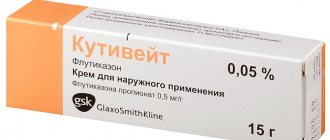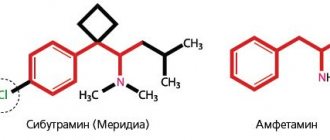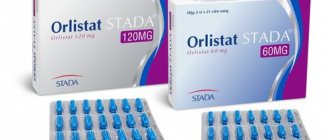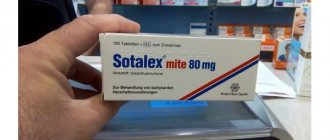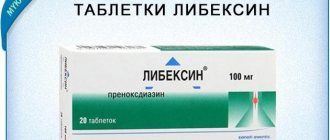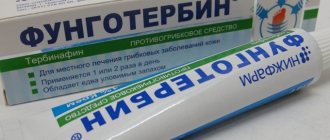Release form and composition
Dosage form - tablets: round or oblong (round - flat with “ZX 1” engraved on one side, oblong - biconvex with a dividing line and “ZX 2” or “ZX 4” engraved on one side), almost white or white (“ZX 1”: 15 pcs. in blisters, 1 or 2 blisters in a cardboard pack; “ZX 2”: 10 pcs. in blisters, 1 or 3 blisters in a cardboard pack; “ZX 4”: by 10 pieces in blisters, in a cardboard pack 3, 9 or 10 blisters).
Active ingredient: doxazosin mesylate, in 1 tablet with engraving:
- “ZX 1” – 1.213 mg, which is equivalent to 1 mg of doxazosin;
- “ZX 2” – 2.425 mg, which is equivalent to 2 mg of doxazosin;
- “ZX 4” – 4.85 mg, which is equivalent to 4 mg of doxazosin.
Auxiliary components: granulated microcrystalline cellulose, lactose, microcrystalline cellulose, anhydrous colloidal silicon dioxide, sodium carboxymethyl starch (type A), magnesium stearate, sodium lauryl sulfate.
How much does the medicine cost?
Of course, the issue of cost is important for every patient. So how much will Zoxon tablets cost? The price, of course, will depend on many factors. In particular, it is worth taking into account the manufacturer, city of residence, financial policy of the pharmacy, etc.
On average, 30 tablets with a dosage of 1 mg will cost you 210-270 rubles. At the same time, the same package of thirty tablets, but with a dose of the active substance of 2 mg, costs about 320-400 rubles. By the way, in most cases one pack is enough for an entire course of treatment.
Pharmacodynamics and pharmacokinetics
When Zoxon is prescribed to patients with benign prostatic hyperplasia, urodynamic parameters are significantly improved and the manifestations of symptoms of the disease are reduced. The positive effect of the drug is due to the blockade of alpha1-adrenergic receptors, which are located in the capsule and stroma of the prostate gland and in the area of the bladder neck.
As a result of a decrease in total peripheral vascular resistance, blood pressure decreases significantly. Clinically significant hypotensive effect is achieved when tablets are administered once a day and lasts for 24 hours. In this case, blood pressure decreases gradually, and the maximum decrease is observed 2–6 hours after taking the tablets.
Doxazosin has a positive effect on the blood lipid profile, significantly reducing the concentration of cholesterol and triglycerides and thereby helping to reduce the likelihood of developing coronary heart disease. Zoxon reduces hypertrophy of the left ventricle of the heart, inhibits platelet aggregation and reduces the tendency to thrombus formation.
The drug can be used in patients with diabetes mellitus, patients with gout, bronchial asthma and the elderly, as it does not have a negative effect on general metabolism.
Doxazosin is well absorbed from the digestive tract (80–90%), but when taken with food, absorption of the drug slows down by 1 hour. Maximum plasma concentration is achieved 1–2 hours after Zoxon administration. Up to 98% of the drug binds to plasma proteins. Biotransformation of doxazosin occurs in the liver; the metabolites are pharmacologically inactive.
The bioavailability of Zoxon is 69–70%. If liver function is impaired and drugs that alter hepatic metabolism are taken, the biotransformation process of doxazosin may be disrupted. Its elimination from plasma is biphasic, with a terminal half-life of 22 hours. Inactive metabolites are excreted in the feces, and less than 5% of the dose taken is excreted unchanged. In patients with kidney disease and the elderly, the pharmacokinetics of doxazosin does not change significantly.
Features of good stagnation
Orthostatic hypotension/syncope.
As with other α-adrenergic receptor blockers, orthostatic hypotension with this drug developed in only a small number of patients, manifested by confusion and weakness and, rarely, loss of fluidity ( syncope), especially at the beginning of therapy. Before starting therapy, it is necessary to control the level of arterial pressure in order to minimize possible postural effects.
When prescribing therapy with an effective α-adrenergic receptor blocker, the patient should be informed about how to avoid symptoms of orthostatic hypotension and how to deal with them. The patient should also be advised of the need to be aware of the situation, which poses a risk of injury, the risk of injury, confusion or weakness in the beginning of doxazosin therapy.
Zastosuvannya with terrible heart diseases.
As with other vasodilatory antihypertensive drugs, doxazosin should be administered with caution to patients with advanced acute cardiac disease:
- leg enlargement caused by aortic or mitral stenosis;
- hypersystolic heart failure;
- right heart failure, caused by thromboembolism of the legen artery or pericardial effusion;
- left ventral heart failure with low pressure on the surface.
Stagnation with impaired liver function.
As with other drugs that are extensively metabolized by the liver, doxazosin should be administered with special caution to patients with signs of impaired liver function. Due to the lack of clinical evidence of stagnation of the drug in patients with severely impaired liver function, the drug is not recommended for this group of patients.
Suction together with PDE-5 inhibitors.
Combine doxazosin with phosphodiesterase-5 inhibitors (for example, sildenafil, tadalafil and vardenafil) with caution, as these drugs cause vasodilation and may also cause and in some patients symptomatic hypotension.
To reduce the risk of developing orthostatic hypotension, it is recommended to begin therapy with drugs of the group of phosphodiesterase-5 inhibitors only because the use of α-blockers in the patient results in stable hemodynamics. In addition, it is recommended to initiate therapy with phosphodiesterase-5 inhibitors at the lowest possible dose and maintain a 6-year interval between doxazosin and phosphodiesterase-5 inhibitors.
Treatment for patients during cataract surgery.
In some patients who took tamsulosin during cataract surgery or before surgery, intraoperative atonic iris syndrome (IFIS, a variant of iris syndrome) was observed to develop during surgery. some points). It was reported that the development of such a side effect was observed during the period when other α1-blockers were ingested, so it is not possible to exclude the possibility of the development of this effect for other drugs in this class of drugs. Because IFIS can lead to an increase in the frequency of procedural complications during surgery, when preparing before surgery, you should inform ophthalmological surgeons whether the patient is stagnant or has stagnated on α1-adrenergic receptor blockers.
Patients with rare episodes of illness, such as galactose intolerance, Lapp lactase deficiency and glucose-galactose malabsorption, should not take this drug.
Instructions for use of Zoxon: method and dosage
The tablets are taken orally, regardless of food intake, swallowed whole (without chewing) and washed down with a small amount of water. Frequency of administration: 1 time per day, morning or evening.
The doctor prescribes the dose and duration of treatment based on clinical indications.
Recommended dosage:
- Arterial hypertension: first dose – 1 mg 1 time per day (the best time is before bedtime, since after taking the patient must be in a supine position for 6-8 hours due to the risk of developing the phenomenon of the first dose, especially against the background of preliminary therapy diuretics). Then, to achieve the required therapeutic effect, it is recommended to increase the dose several times every 1-2 weeks. Optimal hypotensive effect is usually achieved with a daily dose of 8 mg. After achieving stable blood pressure, it is recommended to transfer the patient to a maintenance average therapeutic daily dose of 2-4 mg. Depending on the severity of the condition and the characteristics of the course of the disease, the dose may range from 1 mg to 16 mg per day, but no more;
- Impaired urination due to benign prostatic hyperplasia: in the absence of arterial hypertension - 2-4 mg once a day. The maximum daily dose is 8 mg.
Zoxon is usually taken for a long period.
Overdose
The main symptom of doxazosin overdose is arterial hypotension. Place the patient securely on his back with his head down. Treatment is symptomatic, aimed at stabilizing hemodynamic indicators and vitally important functions of the body. If symptomatic onsets are not enough, plasma exchangers are used to treat shock. After this, if necessary, shut down the vessel's sound systems. Keep an eye on the function and, if necessary, stop the supporting entries. At a high level, doxazosin is bound to plasma proteins; hemodialysis is not indicated.
Side effects
- Cardiovascular system: often, especially at the beginning of therapy – orthostatic hypotension (in rare cases it can cause fainting), edema; a cause-and-effect relationship has not been established in clinical studies - chest pain, tachycardia, angina pectoris, bradycardia, palpitations, myocardial infarction, cerebrovascular accident, arrhythmia;
- Respiratory system: rhinitis;
- Nervous system: drowsiness, dizziness, headache;
- General reactions: malaise, fatigue, asthenia;
- Digestive system: nausea.
In addition, patients with benign prostatic hyperplasia may develop side effects:
- Nervous system: increased excitability, insomnia, dry mouth, paresthesia, hypoesthesia, tremor, impotence, priapism;
- Digestive system: lack of appetite, flatulence, dyspepsia, abdominal pain, constipation or diarrhea, increased activity of liver enzymes, cholestasis, hepatitis, jaundice;
- Respiratory system: shortness of breath, nosebleeds, bronchospasm, cough;
- Urinary system: urinary incontinence, dysuria, hematuria, polyuria, nocturia;
- Musculoskeletal system: muscle weakness, myalgia, arthralgia, muscle cramps;
- Endocrine system: gynecomastia;
- Sense organs: tinnitus, blurred vision;
- Dermatological reactions: alopecia;
- Hematopoietic organs: thrombocytopenia, leukopenia, purpura;
- General reactions: feeling of heat, allergic reactions, urticaria, skin rash, back pain.
Side effects
In patients with arterial hypertension, side reactions of the orthostatic type were most often observed (which in rare cases were accompanied by loss of fluid) or nonspecific side reactions.
Patients with BPH experience the same profile of adverse reactions as patients with arterial hypertension.
To assess the frequency of side effects, a classification is made: very often (≥ 1/10), often (≥ 1/100 and < 1/10), infrequently (≥ 1/1000 and < 1/100), rarely (≥ 1/10) 10000 and < 1/1000), even rarely (< 1/10000) this frequency is unknown (it is impossible to estimate on the basis of other data).
| Classification of organ systems according to MedDRA | Frequency | Adverse reactions |
| Infections and invasions | Often | Infections of the spiracles, infections of the spleen |
| On the side of the blood system and lymphatic system | Very rarely | Leukopenia, thrombocytopenia |
| On the side of the immune system | Infrequently | Allergic reactions |
| Metabolic and nutritional disorders | Infrequently | Gout, loss of appetite, loss of appetite |
| Mental disorders | Infrequently | Restlessness, depression, anxiety, insomnia, nervousness |
| On the side of the nervous system | Often | Drowsiness, confusion, headache |
| Infrequently | Stroke, hypoesthesia, syncope, tremor | |
| Very rarely | Paresthesia, orthostatic confusion | |
| From the side of the organs | Very rarely | Blurred vision |
| Frequency unknown | Intraoperative syndrome of atonic iris | |
| On the side of the hearing and vestibular apparatus | Often | Vertigo |
| Infrequently | Woohoo noise | |
| On the side of my heart | Often | Increased heart rate, tachycardia |
| Infrequently | Angina pectoris, myocardial infarction | |
| Very rarely | Bradycardia, cardiac arrhythmias | |
| On the side of the ship | Often | Arterial hypotension, orthostatic arterial hypotension |
| Very rarely | Pleave | |
| On the side of the respiratory system, chest and mediastina | Often | Bronchitis, cough, shortness of breath, rhinitis |
| Infrequently | Nosebleed | |
| Very rarely | Improvement of irritating bronchospasm | |
| On the side of the scilicointestinal tract | Often | Abdominal pain, dyspepsia, dry mouth, boredom |
| Infrequently | Constipation, flatulence, vomiting, gastroenteritis, diarrhea | |
| Hepatobiliary disorders | Infrequently | Improvement in the normal range of liver function indicators |
| Very rarely | Cholestasis, hepatitis, zhovtyanitsa | |
| On the side of the skin and under the skin | Often | Sverbizh |
| Infrequently | Hanging on the skin | |
| Very rarely | Kropyvianka, purpura, alopecia | |
| On the side of the musculoskeletal apparatus and made of fabric | Often | Back pain, myalgia |
| Infrequently | Arthralgia | |
| Rarely | Meat cramps, meat weakness | |
| On the side of the sphenoid tract | Often | Cystitis, untrimmable cut |
| Infrequently | Dysuria, frequent bleeding, hematuria | |
| Rarely | Polyuria | |
| Very rarely | Increased diuresis, sebum problems, nocturia | |
| On the side of the reproductive system and milk vines | Infrequently | Impotence |
| Very rarely | Gynecomastia, priapism | |
| Frequency unknown | Retrograde ejaculation | |
| Zagalni discord | Often | Asthenia, chest pain, flu-like symptoms, peripheral swelling |
| Infrequently | Bil, the nabryak exposed | |
| Very rarely | Increased humidity, sickness | |
| Tracking results | Infrequently | Increased body mass |
special instructions
Patients with impaired liver function should prescribe doxazosin with caution, especially when taking drugs that have a negative effect on the liver. If the functional parameters of the liver deteriorate, taking the tablets should be discontinued immediately.
The effect of the first dose is especially pronounced with a sodium-restricted diet and previous diuretic therapy.
Orthostatic reactions can be prevented if the patient adheres to smooth transitions from a horizontal position to a standing position.
Drinking alcohol increases the risk of side effects.
Malignancy of the prostate gland must be excluded before starting treatment with the drug.
In patients with benign prostatic hyperplasia and arterial hypertension, the drug effectively affects both pathologies.
During the period of use of Zoxon, patients are advised to refrain from potentially hazardous activities, including driving vehicles and machinery.
Contraindications to therapy
Of course, an important question is whether all categories of patients can take the drug Zoxon. The instructions state that this medicine does have some contraindications.
To begin with, we note that the medicine should not be taken by patients with hypersensitivity to doxazosin, quinazoline-derived substances, as well as other components of the tablets. Also, the drug is not used to treat children and adolescents under 18 years of age.
Relative contraindications include pregnancy and lactation. The results of the studies show that the drug does not have embryogenic or teratogenic effects. However, its effect on the fetus has not been fully studied. The medicine can be taken only if the benefit to the mother's body outweighs the possible risk to the growing child.
The drug "Zoxon" is used very carefully to treat patients suffering from orthostatic hypotension, aortic or mitral stenosis, as well as various liver disorders.
Drug interactions
There were no signs of negative interaction when Zoxon was combined with beta-blockers, thiazide diuretics, furosemide, ACE inhibitors, slow calcium channel blockers, antibiotics, uricosuric and oral hypoglycemic drugs, indirect anticoagulants.
With simultaneous use of doxazosin:
- Drugs for the treatment of arterial hypertension may cause a mutual enhancement of the hypotensive effect;
- Cimetidine increases the concentration of doxazosin in the blood plasma;
- Indomethacin (especially) and other non-steroidal anti-inflammatory drugs, sympathomimetic drugs, estrogens (fluid retention) can help reduce the hypotensive effect of the drug;
- Inducers of microsomal oxidation in the liver can increase the effect of doxazosin, inhibitors can decrease it;
- Epinephrine loses its alpha-adrenergic stimulating effects (there is a risk of developing arterial hypotension and tachycardia).
Showing
Arterial hypertension.
Treatment of arterial hypertension. For most patients, the drug can be administered as monotherapy to control arterial pressure. In cases where it is not possible to adequately control arterial pressure when taking the drug as monotherapy, this drug can be used in combination with such antihypertensive drugs - thiazide diuretics, β-adrenergic receptor blockers, calcium blockers their channels or inhibitors of angiotensin-converting enzyme.
Benign hyperplasia of the anterior moth.
Treatment of obstruction of the thyroid glands, as well as symptoms associated with benign anterior hyperplasia (BPH). Prescribe to patients with BPH both when arterial hypertension is evident and when arterial pressure is normal.
Reviews about Zoxon
According to reviews of Zoxon, the drug significantly improves the patient’s condition, but complete recovery cannot be achieved after a diagnosis of prostatitis. After stopping therapy, the unwanted symptoms of benign prostatic hyperplasia return.
In the treatment of hypertension, Zoxon is used in combination with other drugs that affect the state of the cardiovascular system. Doxazosin can only be taken as prescribed by a doctor and in the prescribed dosage, otherwise there is a high risk of developing unwanted side effects.
Contraindicated
- Increased sensitivity to quinazoline-like drugs (for example, prazosin, terazosin, doxazosin) or to any of the related drugs;
- history of episodes of orthostatic hypotension;
- BPH and concomitant obstruction of the upper glandular ducts, chronic infections of the glandular ducts and the presence of stones in the glandular ducts;
- breast bath (only when indicated for treatment of arterial hypertension);
- arterial hypotension in patients with BPH.
Doxazosin as a monotherapy is contraindicated in patients with excessive urinary tract and anuria with or without progressive nicotine deficiency.


